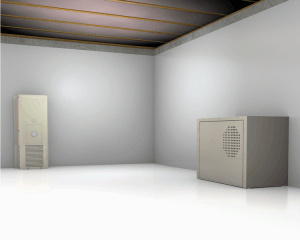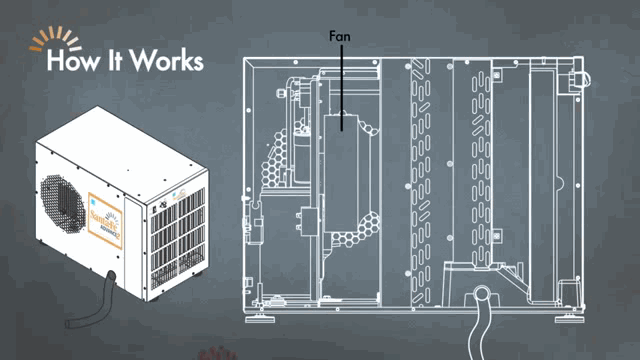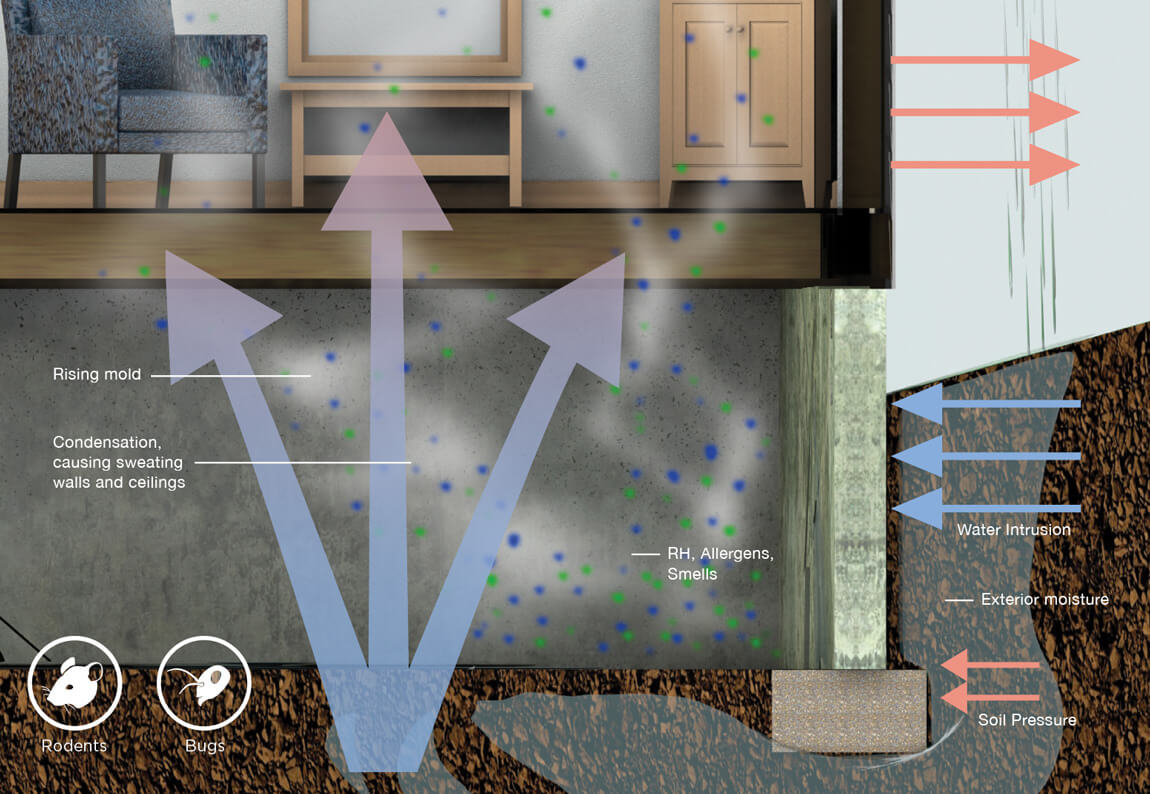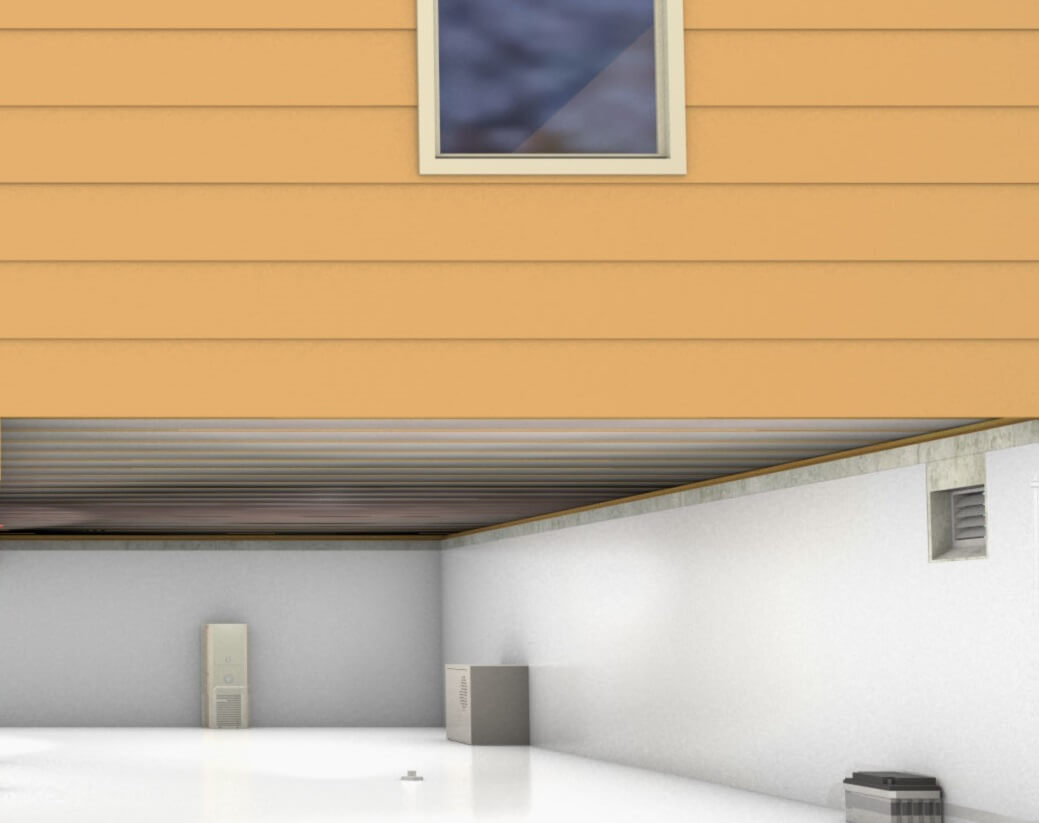Make no mistake, moisture in basements or crawl spaces is a problem, and it’s one you’d be smart to do something about. Finding the best crawl space dehumidifier can solve your problem. We’ll help you pick the best one.
Moisture in the lower areas of the home can cause a number of destructive effects in the basement or crawl space itself. As the moisture builds up it can cause warping and rot in wooden support beams, corrosion in metal appliances like furnaces and water heaters, damaged electrical connections (this can even be a fire risk), mold and mildew outbreaks, insect invasions (little critters love moist spaces) and water damage to any and all personal items kept down below in storage.
But this kind of moisture penetration is especially insidious because it will not stay confined to your home’s underside. Due to a process known as the stack effect, it will work its way upwards through the walls and through the air, raising humidity and contamination levels in your home’s living spaces.
Visualizing the Impact of the Stack Effect in a Crawl Space or Basement
Signs of water infiltration in basements or crawl spaces include:
- High relative humidity levels throughout the house
- Dank, musty odors
- Asthma or allergy attacks (drifting mold spores can be a nasty allergen)
- Outbreaks of mold on first-floor walls
- Peeling paint or wallpaper, or water spots on walls
- Creaking, sagging floorboards
- Sudden insect infestations in the kitchen or bathroom
It might take more drastic (and costly) measures to eliminate water seepage in a basement or crawl space for good, but before you do anything else you might want to consider investing in a basement or crawl space dehumidifier. This may be enough to solve your problem, and even if it isn’t, a dehumidifier will remain an important weapon in your fight against moisture penetration.
Jump to:
- The A-B-Cs of Basement and Crawl Space Dehumidifiers
- Special Features of Basement and Crawl Space Dehumidifiers
- Cost of a Basement or Crawl Space Dehumidifier
- Basement or Crawl Space Dehumidifier Impact on Electric Bills
- Foundation Problems and Moisture Issues
- Consider a Dehumidifier Installed by Olshan, Backed by Warranty
The A-B-Cs of Basement and Crawl Space Dehumidifiers

Any old dehumidifier won’t do, and that’s why you’ll want a unit that has been specially manufactured for dark, dank, and often sprawling areas. Except for dimensions (crawl space units are built with a horizontal shape, to fit in more cramped spaces) basement and crawl space dehumidifiers are essentially interchangeable, and the best appliances usually include extra features that allow them to perform superbly in even the most challenging environments.
For example, basement/crawl space dehumidifiers are equipped with auto-defrost components that prevent excessive frost from building up on the compressor coils. Dehumidifiers can easily freeze up if they’re used in low-temperature environments, making auto-defrost an indispensable addition to any well-manufactured unit designed for basement or crawl space use.
Another key factor with basement/crawl space dehumidifiers is their water removal capacities. Units for residential use are generally available in 30-, 50- and 70-pint models, the numbers referring to how much water a dehumidifier can remove from a surrounding space over a 24-hour period. This is more capacity than you would need for a room humidifier installed in a kitchen or bedroom, which is critical since humidity problems in basements and crawl spaces are generally more chronic and severe.
As long as moisture penetration is moderate, a 30-pint model will likely be large enough to effectively dehumidify a 1,500 square foot area, while a 50-pint model should be sufficient for a 2,000 square foot area. If you have a heavier water infiltration problem you may need to revise these estimates upward.
Maintenance of a basement or crawl space dehumidifier is pretty basic; just clean it from top to bottom, inside and out every couple of weeks, and don’t forget to clean the removable air filter if your unit has one.
Special Features of Basement and Crawl Space Dehumidifiers
While auto-defrost and large capacity are the most important characteristics for effective dehumidifier operation in a basement or crawl space setting, there are other special features you may want to look for before you make a final decision about which unit to purchase.
Such as:
- Built-in adjustable humidistat: This allows you to fully customize your dehumidifier’s performance. If you set the unit to hit a specific relative humidity level (30-40 percent is standard), the humidistat will shut off once that target has been reached.
- Hygrometer: Measures current humidity levels, which will help you monitor the present situation and evaluate your dehumidifier’s daily performance once it’s up and running.
- Automatic shut-off: If your water collection tank fills your dehumidifier will shut off automatically to prevent overflow. Once the tank has been removed and emptied you’ll be good to go.
- Continuous gravity drainage: Instead of a collection tank (that you must empty regularly), your dehumidifier will discharge into the nearest drain through a hose attached to the back of the unit. This can be especially useful in a crawl space dehumidifier, where access after installation can be a bit tricky. You’ll have to connect the hose yourself, while making sure the dehumidifier sits above the drain so water will flow downhill (hence the label, ‘gravity drainage.’).
- Internal condensate pump: This is another option for continuous drainage, but since water is manually ejected with the help of a pump it can be drained anywhere, even into a sink or drain upstairs if you have a long enough hose.
- Air purification system: Many dehumidifiers include an attached air purification system with a removable filter. This helps guarantee good air quality, which is important in this case since air from a basement or crawl space tends to rise into the rooms above it.
Cost of a Basement or Crawl Space Dehumidifier
You should expect to pay somewhere between $870 and $1600 for a good-quality dehumidifier (depending on the size of your space), although you may have to invest a bit more for a superior-quality 70-pint unit. This is definitely a household appliance that you should not skimp on. The impact of a poor or non-performing dehumidifier can be catastrophic.
Basement or Crawl Space Dehumidifier Impact on Electric Bills
As for operating costs, assuming your moisture problem is moderate and your dehumidifier runs far less than full-time, you can expect your monthly utility bills to rise by as little as $7.
Higher numbers ($30-$40) are possible if your problem is more serious and the space is large, but you can stay closer to the low end of these estimates if you purchase a dehumidifier that carries the ENERGY STAR label. This designation is reserved for appliances that meet the highest energy-efficiency standards, and if you go this route you can feel much more relaxed about your dehumidifier’s energy-eating capacities.
Foundation Problems and Moisture Issues
Regardless of how well your basement or crawl space dehumidifier works, it should not be considered a replacement for vitally needed repairs. Foundation troubles are often the source of unwanted moisture intrusion, and if you notice cracks in your basement wall or in the foundation itself you should consult with a professional to have your foundation evaluated for signs of structural damage.
In the case of crawl spaces, a chronic and high-intensity moisture problem usually won’t be solved by just a dehumidifier alone. If you’re facing immense water infiltration crawl space encapsulation is an alternative you should consider. This highly effective procedure will help stop unwanted moisture penetration in its tracks.
Consider a Dehumidifier Installed by Olshan, Backed by Warranty
- If you are in the Little Rock area be sure to speak with our Crawl Space Encapsulation experts for all your crawl space and dehumidifier needs.
- See all of our locations. We likely have a team of foundation repair experts near you!
Looking for a dehumidifier system you can count on, but don’t need help installing it? View our inventory of high powered, eco-friendly systems or schedule a free assessment.
What Our Clients Have to Say On Google:
Workstaff were very courteous and professional, especially, Eddie and Damien. A special thanks to Daniel Garcia, the Supervisor. Daniel followed thru on his commitment and helped ensure my wife and I were satisfied.
Isaiah H.
⭐⭐⭐⭐⭐




